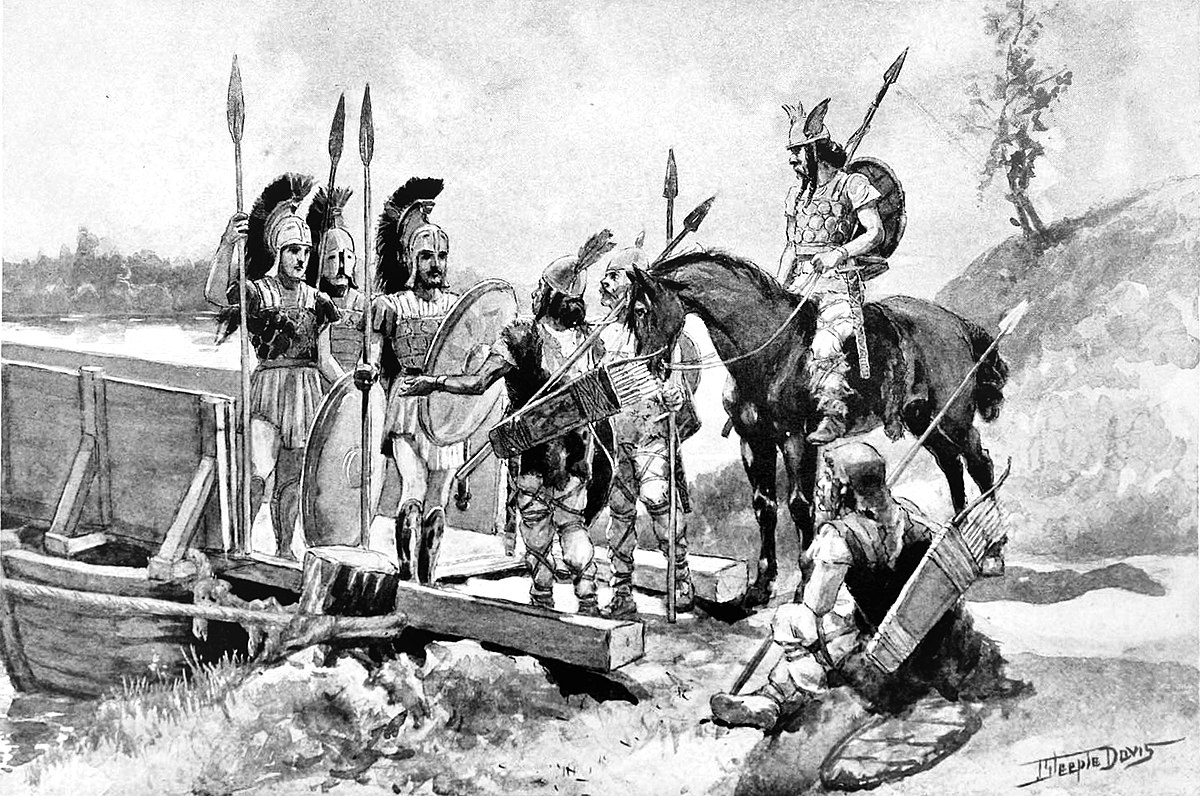
Histiaeus's Campaign
Chios, GreeceWhen Histiaeus heard of the fall of Miletus, he seems to have appointed himself as leader of the resistance against Persia. Setting out from Byzantium with his force of Lesbians, he sailed to Chios. The Chians refused to receive him, so he attacked and destroyed the remnants of the Chian fleet. Crippled by the two defeats at sea, the Chians then acquiesced to Histiaeus's leadership.
Histiaeus now gathered a large force of Ionians and Aeolians and went to besiege Thasos. However, he then received the news that the Persian fleet was setting out from Miletus to attack the rest of Ionia, so he quickly returned to Lesbos. In order to feed his army, he led foraging expeditions to the mainland near Atarneus and Myus. A large Persian force under Harpagus was in the area and eventually intercepted one foraging expedition near Malene. The ensuing battle was hard fought, but was ended by a successful Persian cavalry charge, routing the Greek line. Histiaeus himself surrendered to the Persians, thinking that he would be able to talk himself into a pardon from Darius. However, he was taken to Artaphernes instead, who, fully aware of Histiaeus's past treachery, impaled him and then sent his embalmed head to Darius.
The Persian fleet and army wintered at Miletus, before setting out in 493 BCE to finally stamp out the last embers of the revolt. They attacked and captured the islands of Chios, Lesbos, and Tenedos. On each, they made a 'human-net' of troops and swept across the whole island to flush out any hiding rebels. They then moved over to the mainland and captured each of the remaining cities of Ionia, similarly seeking out any remaining rebels. Although the cities of Ionia were undoubtedly harrowed in the aftermath, none seems to have suffered quite the fate of Miletus. Herodotus says that the Persians chose the most handsome boys from each city and castrated them, and chose the most beautiful girls and sent them away to the king's harem, and then burnt the temples of the cities. While this is possibly true, Herodotus also probably exaggerates the scale of devastation.In a few years, the cities had more-or-less returned to normal and they were able to equip a large fleet for the second Persian invasion of Greece, just 13 years later.
The Persian army then re-conquered the settlements on the Asian side of the Propontis, while the Persian fleet sailed up the European coast of the Hellespont, taking each settlement in turn. With all of Asia Minor now firmly returned to Persian rule, the revolt was finally over.
